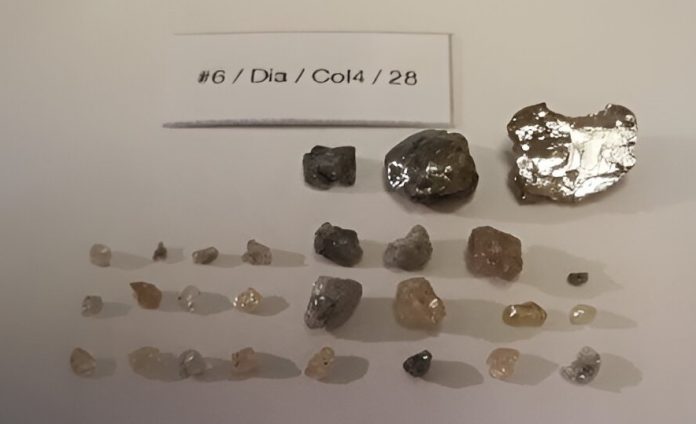
We often admire diamonds for their sparkle, but scientists see them as windows to Earth’s distant past.
In a recent study led by Suzette Timmerman, now at the University of Bern, and joined by researchers from the Carnegie Institution and other universities, diamonds have provided clues about the ancient supercontinent, Gondwana.
First, let’s talk about supercontinents. Think of them as gigantic puzzles, where Earth’s land pieces come together and then break apart over millions of years.
This happens due to a process called plate tectonics, where Earth’s outer shell moves around.
One of these giant land puzzles was called Gondwana, which existed between 800 and 550 million years ago. It was massive! Parts of our modern-day continents, like South America, Africa, and Australia, were once part of Gondwana.
Here’s the challenge: Finding evidence of these supercontinents isn’t easy.
The ground beneath our oceans constantly shifts and gets pushed under other pieces of the Earth, taking away many clues. And while land gives us some hints about Earth’s history, it doesn’t show us everything.
This is where diamonds come into the picture.
Hidden deep inside diamonds are tiny bits of other rocks and materials. While they might seem like flaws to a jeweler, these tiny pieces, called inclusions, are like gold to scientists.
Some diamonds have inclusions that come from very deep inside the Earth, between 300 and 700 kilometers down. These diamonds are called superdeep diamonds.
The research team studied these inclusions inside superdeep diamonds to understand more about Gondwana.
They found that these tiny pieces could tell us how land was added to the bottom of Gondwana, supporting and growing this massive supercontinent.
Under the continents we live on, there’s a thick, strong foundation called a mantle keel. It’s like the roots of a tree, holding the land above in place.
These mantle keels formed below the continents, making them sturdy against the movements of the Earth. Bits of the rocks that made these keels are trapped inside the superdeep diamonds.
To study these inclusions, the team did some serious detective work. They identified these tiny bits, checked their structures, and even figured out how old they were using advanced tools and techniques.
The work required teamwork from scientists in different parts of the world and using some of the best equipment available.
What’s so cool about this? Well, by studying the age and type of these inclusions, scientists can determine when and how the foundation of Gondwana was formed and grew.
It’s like finding old photographs in a time capsule, showing snapshots of Earth’s history.
Lastly, the diamonds themselves have had quite a journey! About 120 million years ago, the big supercontinent began breaking apart. And around 90 million years ago, these diamonds were shot up from deep inside the Earth to the surface by explosive volcanic activity.
With all this information, scientists can now better understand how supercontinents like Gondwana came to be. The diamonds have revealed the hidden processes deep inside Earth that brought continents together, creating our planet’s vast landscapes.
In conclusion, diamonds aren’t just pretty stones; they’re also valuable time capsules that help scientists uncover the mysteries of our planet’s past.
So, the next time you see a diamond sparkle, remember the incredible journey it has taken and the ancient secrets it holds!
Follow us on Twitter for more articles about this topic.
Source: Carnegie Institution for Science.



